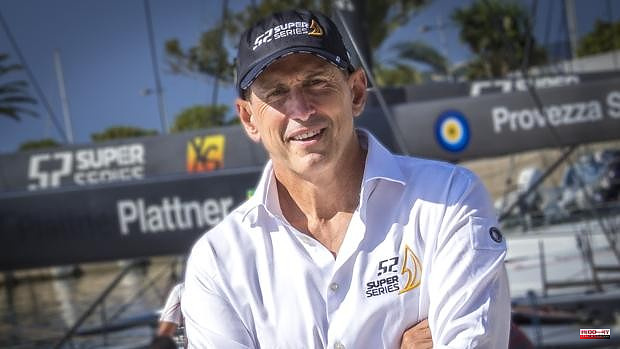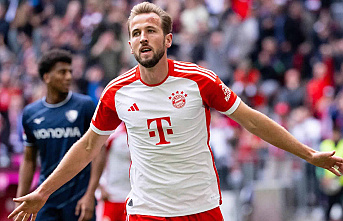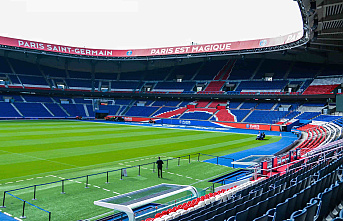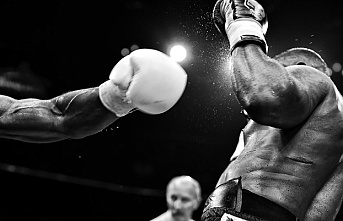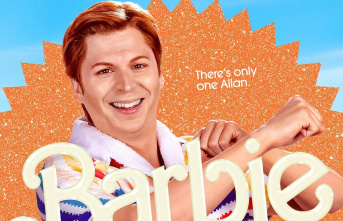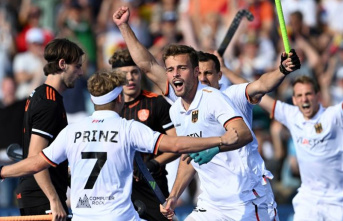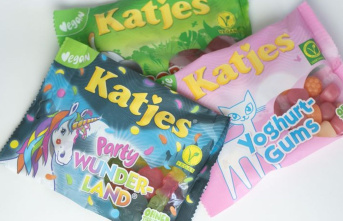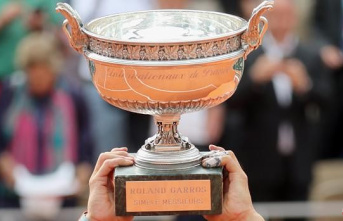Agustín Zulueta, general director of the circuit since 2013, explains the secrets of a format that offers entertainment and generates millionaire returns wherever it goes. Three editions of the Copa América as a crew member, one as manager of the most successful Spanish team in the history of the trophy and, since 2013, general manager of the 52 Super Series. It can be said that Agustín Zulueta (San Sebastián, 1968) knows a thing or two about the world of high-level regattas. An engineer by training specializing in composites, he has been a sailing professional since 1987 and has experienced first-hand some of the brightest moments of sailing in Spain.
What are your responsibilities?
My official position is that of general manager of the circuit.
This includes the management of the company, commercial negotiations with the venues, choice of the calendar and negotiations with the sponsors. The 52 Super Series was founded in 2012 and I was immediately hired. I have been doing this job since May 2013.
What is the purpose of the circuit?
Basically, to organize a navigation platform at the highest level that is fun for shipowners.
What is the key to success?
The key for us to continue after so many years is the coordination between the different elements of the team, the success in management, and knowing how to direct resources towards our objectives. Of course, none of this would be possible without the commitment of the shipowners, the attractiveness of the venues and the strength of our sponsors. It is the effort of many.
What is the ideal fleet size?
The size of the fleet is limited by the logistics associated with the organization of the event. From a certain number of ships, the options of physically fitting in a marina are reduced, not so much because of the dimensions of the TP52, but especially because of the container logistics involved. Ten boats is an ideal size.
What is the organizational structure like?
There is a Board of Directors made up of three people, I am the general manager, a lawyer, a marketing and communication manager, and an operations manager. At the operational level we have the Judges and the Race Committee, personnel on the water who depend on me but select the TP52 class. In addition, there is the communication team, which includes the Chimbovision TV production, Geo Racing with the virtual regatta, the commentators, the photographer and editors in English, Spanish and Italian. This team is supported by resources provided by each branch.
How is the decision making?
We try to announce venues and calendar at least one year in advance, to make it easier for owners and crews to organize themselves in time. We carry out a selection process for the venues during the winter, towards March-April alternatives are presented to the teams, and between June and August the agreements are closed and we announce the following season.
How are the venues selected?
The venues are selected based on four criteria: They have to offer a good regatta field, meet the logistical criteria (that we enter as a fleet, good accessibility and communications), that it be an attractive site for shipowners and that they offer the necessary financial support.
What does the fact of having so many offices in Spain indicate?
That it is a good sailing course, with good weather and wind, and that the ports and marinas understand holding events as a source of income.
What does the presence of a 52 Super Series event bring to a venue?
It contributes around three million euros in direct income. Keep in mind that we are talking about ten teams, each made up of between 25 and 30 members, plus the organization, plus guests,... That's about 500 people living at the headquarters for ten days. We also provide international media coverage, because the circuit makes an effort to promote not only the sporting aspect, but also the social aspect and the environment in which the regattas are held. And there is a factor that is more difficult to assess, and that is that crew members and owners become ambassadors of the venues: We have the example in Portals, which after having welcomed us in seven editions we already consider it as a second home.
Why Bayonne?
In this case, it provides one more venue in the Atlantic, a totally different landscape to the one we are used to, the novelty of a club, the closeness and human kindness, but above all the novelty and the contrast with the usual venues. For many participants it is the first time they visit Galicia, they do not know what to expect, and they are going to be surprised.
How much has the TP52 changed since its birth in 2001?
In general parameters, little; in forms, I would say quite a lot; and in benefits, a lot. We are still talking about a 52-foot boat, but with almost three meters of bowsprit, much lighter than the original ones, with an easy planing rate above 12-14 knots, the highest technology in electronics, carbon rigging and masts, … In general dimensions they are similar to the first ones, but aesthetically and in navigation parameters they are very different. The mainsails are no longer triangular, but rectangular, the boats draw 3.65 meters,... They are optimized to the limit of their performance.
How much is left to evolve?
You never know, but if we evolve it is difficult to increase depth because it makes it impossible to enter ports that are venues for the circuit. Without changing that, it is difficult to increase stability, and therefore performance upwind. Aft you can always make bigger spinnakers and try to lighten the boat a bit, but it will be difficult.
What changes in a TP52 of the 52 Super Series compared to one in oceanic configuration like Ichi Ban?
When a TP52 is optimized in IRC, a little more mast is added, the sail area is increased, the draft is increased and thus they become more stable. But the helmet is basically the same. The TP52 was born for a deep-sea regatta, the Transpac, but it has shown a brutal versatility that allows it to compete at the highest level in barlo-jack regattas in the style of the 52 Super Series, as well as to win a test as tough as the Rolex Sydney. Hobart. She is a boat that has already completed two decades and is still enormously competitive.
Will we see a 'flying' TP52?
I do not think so. It would no longer be a TP52.
What news can we see this year?
Important innovations at a technical level, not many: there are boats that have been optimized this winter, with new keels and bulbs, but little else. At the crew level, we will see that in boats like Quantum Racing, America's Cup teams will be outlined, with Terry Hutchinson on board – CEO of the American Magic.
Are we back to normal with a five-event season?
I would say that we have managed to survive two very difficult years, and that is quite an achievement. In 2020 we had just finished the first of two scheduled events in Cape Town when the global health emergency was declared. It was a very complicated situation, with crew members and organization staff of so many nationalities trying to return home from South Africa. In 2021 we had to give up Bayonne in June and Valencia in July. The circuit started in August in Portals and we were able to celebrate three events, which given the uncertainty of the environment was quite a feat. That we start 2022 in May in Bayonne is excellent news, and I want to take the opportunity to thank the Monte Real Club de Yates for having been able to adapt with us to the change of date from 2021 to 2022. We will continue in June with the Rolex World Cup in Cascais, Portals in July, Scarlino in September and Barcelona in October. Yes, we are back to normal.
Is saying that the crews include the best in the world a slogan or a reality?
It's reality. They certainly include the best in the world of traditional sailing, not to mention flying boat specialists. Apart from Hutchinson, from American Magic, there are Vasco Vascotto and Francesco Bruni, from Luna Rossa,... A review of the line-ups of the 52 Super Series discovers the most outstanding experts in the America's Cup, around the world, Olympics,... Without a doubt, a selection of the best.
What is the role of sustainability in the circuit?
I would ask the question the other way around: what is the role of the circuit in sustainability. For seven years, since we started with this project, sustainability has been part of our DNA and I think it is a responsibility of all of us who practice this sport, it is something essential and our duty to take care of our environment and the ocean. We have several projects apart from saving plastic or fuel, and the one I like the most is the educational one: leaving a legacy at the venues of what the passing of the 52 Super Series has meant. A legacy to the new generations, sailing schools,… We bring the strength we have to communicate the sport and all these values.
Headquarters in Spain, Spanish director, Spanish organization, Spanish crew members, shipyards in Spain, designer in Spain,… What has to happen to have a Spanish team again?
You have to try to get the sponsors to turn over. For that, perhaps this America's Cup acts as a trigger to reactivate sailing in Spain. It is a pity that after all the effort with events such as the Copa América in Valencia or the Volvo in Alicante, of all that has been achieved, the sponsors do not see sailing as a clear investment channel.
What does Spain have to concentrate events of the highest level?
It has become clear that Spain is a benchmark in the organization of nautical events. There is no doubt that we have many kilometers of coastline, with very good marinas, great professionals,... The passage of the Ocean Race through Alicante and the America's Cup through Valencia has been a clear example that hosting nautical events is a very logical use of marketing and communication investments, with returns for all sectors, not only in cities, but also internationally.
What do you think of the designation of Barcelona to host the 37th Copa América?
This will allow the city to become a benchmark for hosting events, the events will raise the social temperature and social interest ahead of the next Copa América. That is good for everyone: for the city, for the country and for the nautical industry. The 52 Super Series will contribute their grain of sand by visiting the city in 2022 and 2023.

